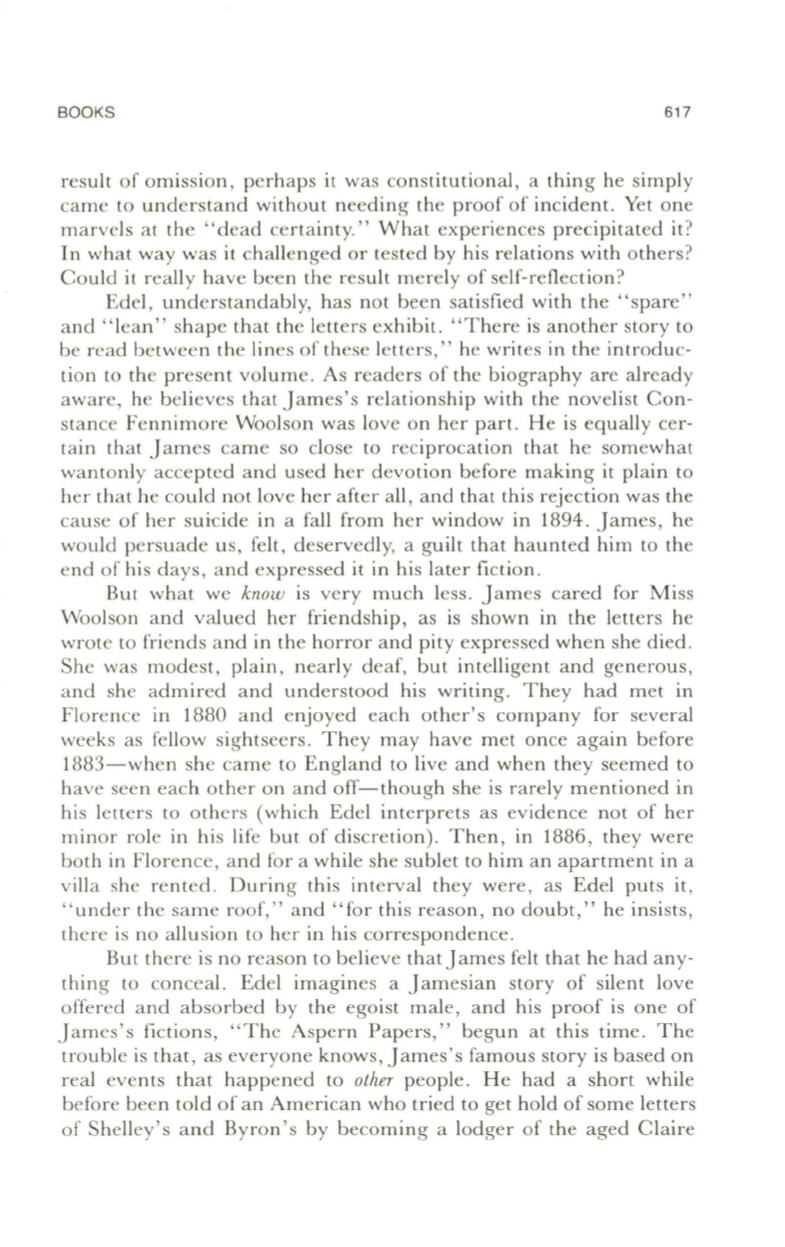
BOOKS
617
result of omission, perhaps it was constitutional, a thing he simply
came to understand without needing the proof of incident. Yet one
marvels at the "dead certainty." What experiences precipitated it?
In what way was it challenged or tested by hi s rel ations with others?
Could it really have been the result merely of self-reflection?
Edel, understandably, has not been satisfied with the "spare"
and" lean" shape that the letters exhibit. "There is another story to
be read between the lines of these letters," he writes in the introduc–
tion to the present volume. As readers of the biography are already
aware, he believes that James's relationship with the novelist Con–
stance Fennimore Woolson was love on her part. He is equally cer–
tain that James came so close to reciprocation that he somewhat
wantonly accepted and used her devotion before making it plain to
her that he could not love her after all , and that this rejection was the
cause of her sui1:ide in a fall from her window in 1894. James, he
would persuade us, felt, deservedly, a gui lt that haunted him
to
the
end of his days, and expressed it in his later fiction.
But what we
know
is very much less. James cared for Miss
Woolson and valued her friendship, as is shown in the letters he
wrote
(0
friends and in the horror and pity expressed when she died.
She was modest, plain, nearly deaf, but intelligent and generous,
and she admired and understood his writing. They had met in
Florence in 1880 and enjoyed each other's company for several
weeks as fellow sightseers. They may have met once again before
1883-when she came to England
to
live and when they seemed to
have seen each other on and off-though she is rarely mentioned in
his letters to others (which Edel interprets as evidence not of her
minor role in his life but of discretion). Then, in 1886, they were
both in Florence, and for a while she sublet to him an apartment in a
villa she rented. During this interval they were, as Edel puts it,
"under the same roof," and" for this reason, no doubt," he insists,
there is no allusion to her in his correspondence.
But there is no reason to believe thatJames felt that he had any–
thing to conceal. Edel imagines a Jamesian story of silent love
offered and absorbed by the egoist male, and his proof is one of
James's fictions, "The Aspern Papers," begun at this time. The
trouble is that, as everyone knows, James's famous story is based on
real events that happened to
other
people. He had a short while
before been told of an American who tried
to
get hold of some letters
of Shelley ' s and Byron's by becoming a lodger of the aged Claire


